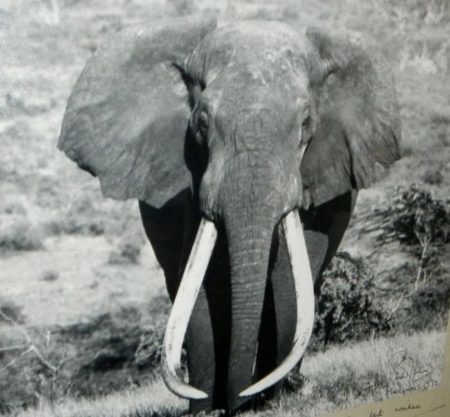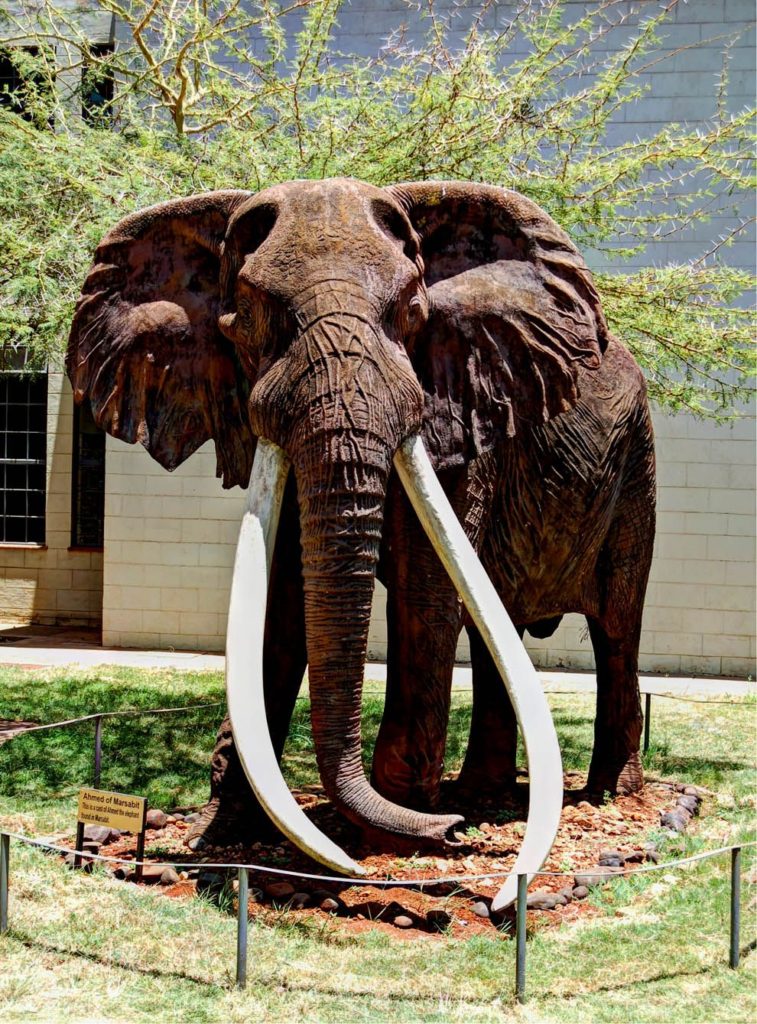King of Marsabit


Image credit: Buno Photography
Ahmed showed no signs of knowing that he had been dubbed the ‘King of Marsabit’. Perhaps he did, and his elusiveness was an intentional ploy to add to his mystery. During his lifetime, eager travelers would rigorously scour the earth for days to find even a tiny trace of him and leave with none. Those who managed to spot him were met with his sharp, wary caution. He was known to hide in bushes until the shadow of night creeped over the land, denying disappointed onlookers a view of his magnificent size.
Like any King, Ahmed’s life was protected by guards sworn to ensure his safety. Ahmed, after all, had been granted special protections from Jomo Kenyatta in 1970. He was also accompanied by younger elephants that charged fearlessly at danger to allow the old elephant the chance to retreat.
His calm demeanour and tendency to seek isolation was misleading. For one, he was a movie star. The King starred in three movies in 1970 including a French documentary, ‘The search for Ahmed’ and an NBC film with John Plimpton.
Underneath Ahmed’s calm exterior, he had the raw, unbridled power of a wild elephant his size. Like his peers, he could will his legs to run faster than those of a human. An elephant has no patience for ragged breath or faces tight with fear and desperation.
Many have had to seek refuge in the outstretched arms of trees to make way for the slow, ceremonial procession of a herd. Clinging to branches, they have pressed their cheeks against rough bark, and waited with bated breath for the rhythmic stomps to fade away, and for the air that danger stole to return delicately with the breeze through the trees.
It was difficult to believe that much could stand up to being pierced by Ahmed’s tusks. The ivory dove down the length of the grey pillars that were his legs and recoiled back up. It was as if they desperately wanted to kiss the ground and changed their minds just as quickly, curling towards each other instead.
Despite his intimidating stature, Ahmed seemed uninterested, or perhaps even unimpressed, with his beastly potential. He found his place among giants like himself, the mountains of Marsabit. At his humble abode, cool air rushed around freely. The surrounding trees were a medley of cheerful green hues. The hues were so vivid that they seemed to have been tenderly swirled together on the paint palette of the most skilled of painters.
Ahmed left this life with a grace that only he could manage. The regal tusks that hovered just above the ground met the earth gently in a final position of rest. He was discovered partly leaning against a tree and poised as ever.
Today, Ahmed’s replica can be viewed in all its glory in front of the Kenya National Museum in Nairobi. The King stands proudly, taking his place as an awe-inspiring emblem of majesty that will last for generations to come.

Ahmed the Elephant. Image credit: Frontier Oasis




2 Comments
I really like your writing style.. Keep doing what you are doing
Asante sana! We’re so glad that you enjoyed the read!